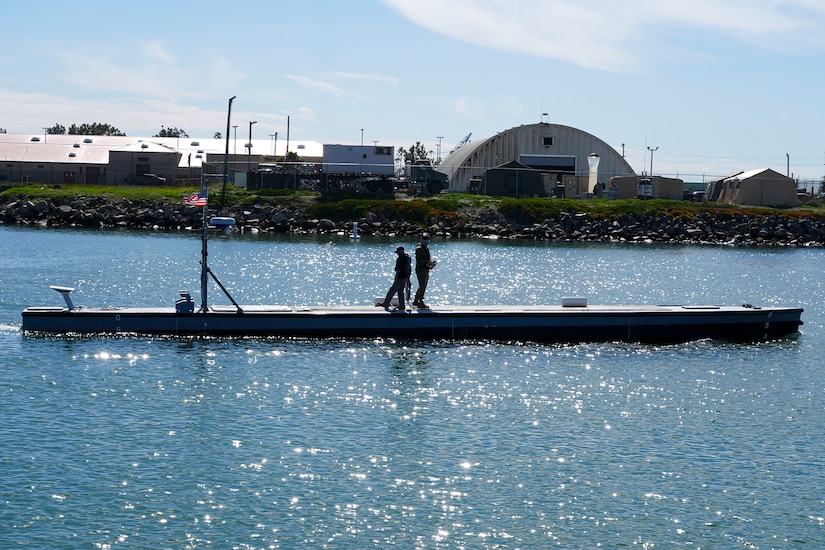New watercraft, including some that are autonomous, and new ways to work with partners figure into how the Marine Corps plans to improve the way it supplies itself though improved logistics.
That logistics is the linchpin of any successful military operation is no surprise, but Gen. Christopher Mahoney, the assistant commandant of the Marine Corps, made a point of it Tuesday when talking with Defense One digital media platform in Washington, D.C.
“Logistics will stop you in your tracks if you haven’t thought it through, if you don’t have a system that is strong and functioning,” Mahoney said.
Command and control of supplies, which means ensuring that the Marine Corps has visibility of its supplies and commodities, is only part of the Marine Corps’ plan to better supply Marines.
“We’ve got a few initiatives that we’re taking on board,” he said. “One is GPN, the global positioning network, which has two main segments to it in my mind. You have a terrestrial segment, where you have agreements with host nations and countries where you can put stocks forward to destroy time and distance, and then a seaborne segment, which makes use of large cargo ships that are in the maritime prepositioning squadron that is able to maneuver across the sea domain to put your stocks where they’re needed.”
Modernizing Marine Corps logistics — the mechanism which brings necessary supplies and materials to the troops — also involves new transportation equipment capable of doing more than what is possible now, Mahoney said. One of those options is the medium landing ship, or LSM.
According to the Congressional Research Service, the amphibious LSMs are expected to be anywhere from 200 to 400 feet long, carry a crew of about 70 sailors, and have about 8,000 square feet of deck cargo space. They are also expected to be less expensive to procure and operate than the Navy’s current amphibious ships. The Navy plans to purchase from 18 to 35 of those ships to support the Marine Corps.
“It is a shore-to-shore logistics connect to get heavy things that we can’t put on airplanes or don’t want to have a big ship coming in to bring, get it from Point A to Point B to move; maneuver it from Point B to a more advantageous position at Point C; and then sustain that position,” Mahoney said.
The general also said the Marine Corps is interested in the “autonomous low-profile vessel,” or ALPV, which he describes as an “extremely low-observable,” autonomous, ocean-going ship.
The general said looking into how drones can contribute to logistics is also part of the plan.
“We also are interested in large autonomous drones and medium autonomous drones … to get after movement, to get after maneuver and sustainment and in the logistics realm,” he said.
Mahoney said this will be a “big year” for testing and evaluation of drones and watercraft that can help the Marines do better logistically.








